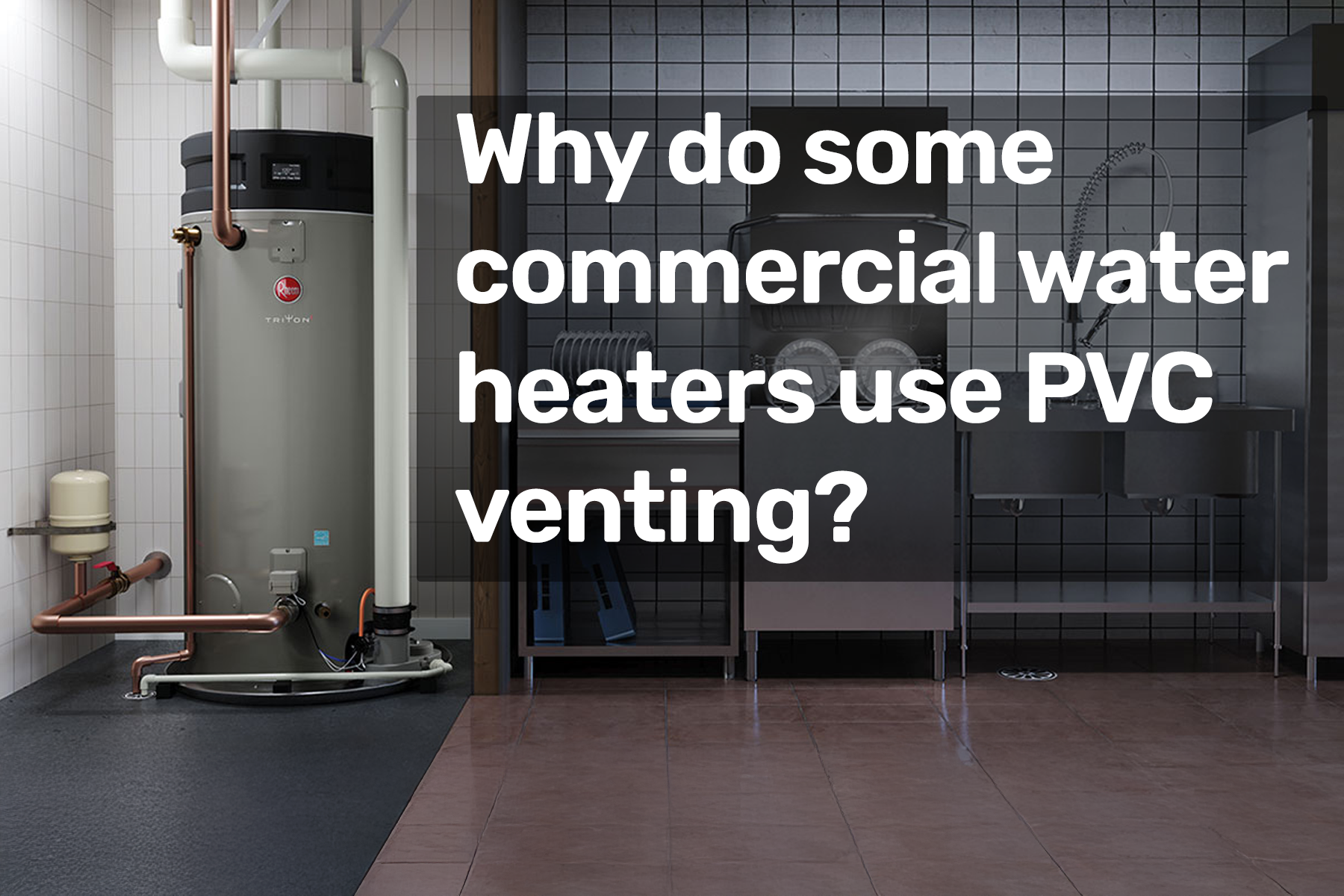
Why High-Efficiency Commercial Power Vent Water Heaters Use PVC Venting—Not Metal
| Noah Beson
When it comes to commercial water heaters, power vent models like the Rheem GHE100SU-200 have changed the game. These high-efficiency units not only save energy and reduce operating costs—they also simplify installation and lower materials costs by allowing PVC venting instead of traditional metal. But what makes this possible?
Let’s break it down.
The Science Behind It: Lower Exhaust Temperatures
The key reason high-efficiency power vent water heaters can use PVC is due to how efficiently they extract heat from combustion.
🔥 Traditional Models:
-
Use atmospheric venting, pushing hot exhaust gases up a metal flue.
-
Exhaust temperatures can exceed 400°F, which would melt PVC—requiring metal (typically B-vent or stainless steel).
🌡️ High-Efficiency Power Vent Models:
-
Use fan-assisted exhaust and heat exchangers to pull more heat into the water before gases exit.
-
The resulting flue gas temperatures are typically below 140°F, cool enough for Schedule 40 PVC.
This lower temperature makes PVC safe, reliable, and compliant with most local building codes when used in conjunction with approved venting configurations.
Benefits of PVC Venting
💰 Cost Savings
PVC is significantly less expensive than stainless steel or aluminum vent pipe. For long vent runs, this can translate into hundreds or even thousands in savings.
🛠️ Easier Installation
PVC is:
-
Lighter and easier to cut
-
Easier to seal and join
-
Readily available at most supply houses
Contractors appreciate the time and labor savings on large jobs.
📏 Flexible Routing
Because the Rheem GHE100SU-200 and similar models use fan-assisted venting, they support longer horizontal or vertical vent runs, even with multiple elbows—something atmospheric models can’t match.
Why It Works on the Rheem GHE100SU-200
The Rheem GHE100SU-200 is a 100-gallon, 199,900 BTU high-efficiency condensing commercial water heater with up to 96% thermal efficiency. This means:
-
Less heat is wasted in exhaust gases
-
Combustion byproducts are cooler
-
Moisture in the exhaust condenses, extracting even more heat
As a result, the venting temperature remains low enough for PVC, CPVC, or ABS pipe when installed per manufacturer guidelines.
✅ It meets UL and ANSI safety standards for PVC venting
✅ It's field convertible to power direct vent
✅ It’s designed for use in tight mechanical rooms where flexible routing is essential
Important Considerations for PVC Venting
While PVC venting offers great advantages, it must be done correctly:
-
Always follow the manufacturer’s instructions for pipe diameter, max vent length, and termination placement.
-
Use only approved vent materials. Not all PVC pipes are rated for flue gas.
-
Slope the vent pipe properly to allow condensate to drain and prevent blockages.
-
Install vent terminations per code to avoid recirculating exhaust or blocking air intakes.
Working with a trained installer ensures compliance and safety.
Final Thoughts
Choosing a high-efficiency power vent water heater like the Rheem GHE100SU-200 offers more than just energy savings—it can also cut down on installation time and costs by enabling the use of PVC venting. It’s a smart move for commercial buildings looking to upgrade to modern, flexible, and cost-effective hot water solutions.
Need help finding the right venting option or water heater for your facility?
Contact the experts at Wholesale Water Heater today at (248) 892-1000 or explore our selection online.







